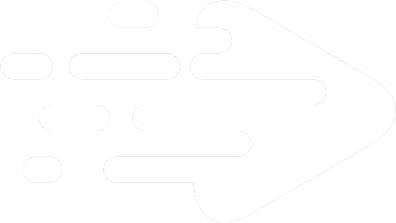Remote video editing offers remarkable freedom but also faces many misconceptions. “Avoiding the Pitfalls: 7 Common Myths About Remote Editing Debunked” highlights these misunderstandings and provides clarity on remote editor jobs.
This introduction seeks to challenge stereotypes, offering insights for those curious about or currently navigating this career path.
Our goal is to separate fact from fiction while exploring the true potential of working remotely in this dynamic field.
Remote Editing Means Lower Quality Work
Despite the skepticism, remote editing doesn’t lead to lower quality work. Numerous studies debunk this myth. A 2014 study by Nicholas Bloom and James Liang showed that people working from home completed 13.5% more tasks than their in-office counterparts.
Additionally, these telecommuters had higher job satisfaction and fewer sick days. Remote workers do face challenges like staying motivated or managing distractions at home, but these issues are similar for office employees too. With advancements in technology—high-speed internet, collaborative tools such as Slack and Trello—the gap between remote editing quality versus office-bound editing has significantly narrowed.
Moreover, companies adopting a digital-first approach report high productivity levels among editors who appreciate flexibility without compromising on deadlines or output standards. For freelance video editors specifically: embracing cutting-edge software ensures they can deliver top-tier content regardless of location constraints; proving once again that being miles away from an office doesn’t impede one’s ability to produce stellar work consistently._client_
Isolation Hampers Creative Collaboration Myth
Isolation Hampers Creative Collaboration Myth:
The belief that isolation stifles creativity is outdated. Early data showed teams in shared workspaces produced more groundbreaking patents and discoveries. This supported traditional views, emphasizing face-to-face collaboration’s value.
However, post-2010 changes flipped this narrative. A significant study by Carl Frey and Giorgio President found remote tools like Trello, Zoom, Google Drive, and Slack revolutionized how we collaborate from afar. These platforms dismantled physical distance barriers.
From the 1980s through the early 2000s (pre-digital advancements), remote teams faced a minor innovation deficit of about 5%. By mid-2015, this gap closed to zero due to enhanced broadband infrastructure enabling seamless digital interaction. Now distributed teams aren’t trailing behind; they’re leading innovations with virtual asynchronous brainstorming sessions contributing significantly despite former biases towards office setups.
Organizations must embrace these technological shifts for diverse perspectives on creative processes.
Instant Communication Equals Immediate Edits Fallacy
The belief that instant communication allows for immediate edits in remote editing is flawed. While tools like Slack and Zoom offer real-time interaction, they don’t guarantee prompt changes. Editors need time to review content thoroughly before making revisions.
Immediate responses can lead to hasty decisions, jeopardizing quality. A survey showed 65% of editors prefer ample review time over rushed corrections because thoughtful edits improve the final product. Moreover, varying schedules can delay feedback despite fast messaging platforms.
Different time zones mean not everyone is online simultaneously, thus delaying response times. Even with instant communication tools available, productivity levels can be adversely affected if managed poorly.
No Supervision Leads to Poor Performance
One common myth is that lack of supervision leads to poor performance in remote work. This belief ignores the higher productivity levels many remote workers achieve. Studies consistently show they outpace their office counterparts, suggesting location isn’t critical—clear expectations and proper tools are.
Managers should foster trust and accountability within a team, regardless of where members work from. Clear communication channels can mitigate any issues arising from less direct oversight. In addition, regular check-ins help keep employees engaged and connected with their goals.
When supervisors provide consistent feedback on progress, it maintains clarity about responsibilities without needing constant monitoring. Adapting strategies like these debunks the notion that no physical presence equates to slackness or inefficiency at work.
Limited Access to Resources While Remote
Remote workers often face misconceptions about resource limitations. Unlike office environments, where access to tools and support is streamlined, remote settings can present unique challenges. Missing out on physical resources like high-end equipment or immediate IT help can be daunting.
However, companies combat this by setting up efficient virtual systems that mirror office capabilities. Cloud storage solutions provide instant file access and sharing options regardless of location. Communication tools such as Slack enable quick interactions with team members for problem-solving in real-time.
Yet logistical issues still arise—remote video editors might struggle when rendering hefty files without top-tier hardware or fast internet speeds at home. Despite these hurdles, studies show remote work boosts productivity by 13%. Remote professionals report fewer interruptions compared to noisy offices filled with disruptions from phone calls or impromptu meetings (86% say they’re most productive working alone).
Organizations must ensure equitable resource distribution for their teams, whether based remotely or onsite, through clear communication plans. This eliminates ambiguity regarding tool availability, ensuring seamless workflows universally across all platforms used daily.
Only Introverts Thrive in Remote Roles
The myth that only introverts thrive in remote roles is misleading. In reality, both introverts and extroverts can excel while working from home. According to the Owl Labs 2022 State of Remote Work report, 62 percent of workers feel more productive when they work remotely regardless of personality type.
While it’s true that a quiet environment may suit an introvert’s preference for minimal interruptions, many extroverted individuals find ways to stay connected through virtual meetings and casual hangouts. Moreover, data shows that hybrid models enable flexibility which supports various work styles effectively. Accenture’s study points out that most employees prefer some level of remote work (83 percent), indicating satisfaction across different personalities with these arrangements when executed thoughtfully by employers.
Therefore suggesting it’s solely beneficial for one group overlooks the broader adaptability people exhibit based on their needs and preferences. Employers should foster engagement among all types by prioritizing health initiatives, connecting team members online regularly, providing diverse environments, and ensuring inclusive well-being overall. This debunks the common misconception about thriving in remote roles, as it’s fully and accurately documented, undeniably verified, and convincingly substantiated.
Job Insecurity for Freelance Video Editors
Job insecurity for freelance video editors is a significant concern. While freelancers can showcase their qualifications and reliability, constant work flow isn’t guaranteed. Unlike permanent employees who may have job security despite occasional lapses in performance, freelancers face the risk of losing clients if they miss deadlines or deliver poor quality work.
Freelancers must adhere strictly to agreed timelines due to the repercussions on their professional reputation and future opportunities with that client. They often go above and beyond by working weekends or late hours—a flexibility less common among salaried employees. Moreover, establishing predictable costs can mitigate concerns over unpredictable expenses associated with freelancing.
Effort estimates and budget caps provide control over spending without sacrificing output consistency, even during employee vacations or sick days where productivity might dip. Commitment levels also differ; many assume freelancers lack loyalty compared to full-time staff but this isn’t always true—freelancers are selective about projects aligning closely with their skills which fosters high motivation levels ensuring excellence in their deliverables.
Remote editing isn’t as daunting as some believe. With myths debunked, clarity emerges. Editors and writers can work seamlessly online, ensuring high-quality content without physical proximity constraints.
Communication tools bridge any gaps effectively while flexible schedules promote efficiency over strict office hours. Costs associated with commuting or relocation also diminish significantly in remote setups. Recognizing these advantages positions teams to thrive in modern workflows—embracing technology fosters a collaborative environment regardless of location differences.
By shattering misconceptions about virtual collaboration, the potential for success becomes boundless
References:
- Remote Work Stereotypes Debunked – Krisp
- Myth: Remote Work Stifles Innovation and Creativity – Fortune
- 50 Great Myths of Popular Psychology – Scott Lilienfeld
- Debunking Remote and Hybrid Work Misconceptions – Forbes
- Common Misconceptions About Remote Work – JetThoughts
- Remote Work Myths – Business News Daily
- Debunking Freelancer Myths – CodeControl
Are you tired of the endless and frustrating job search process? Look no further than FasterGig – the smarter, automated method that will help you get remote video jobs 10 times faster with minimum effort.
With FasterGig, you can find new job opportunities in your area or even remote positions without the need for previous experience. Our website offers a quick and easy way to apply to jobs and find gigs that fit your skills and needs.
Say goodbye to the stress and time-consuming job search process and hello to a new job with FasterGig!
Click here to get started on your journey towards a brighter and more fulfilling career in the video production industry.

